ADVANCED MODULAR DESIGN
Get agile with a no-code, drag-and-drop email builder
Give your team the autonomy to create and the flexibility to innovate with Dyspatch. An innovative drag-and-drop email builder, non-technical users can create emails at lightning speed, without sacrificing quality.
Get a demo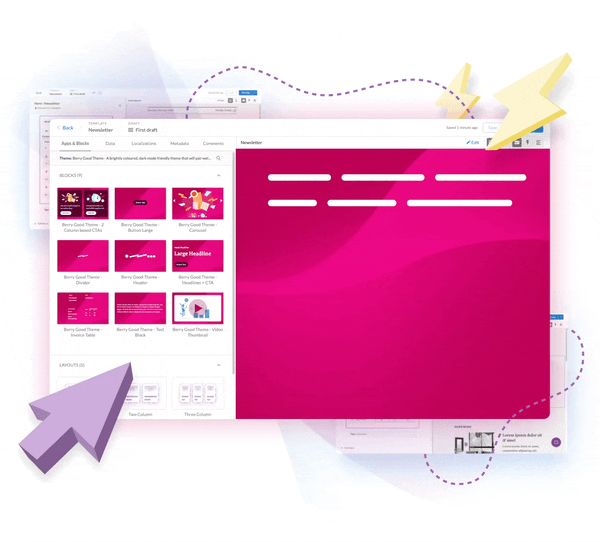
Build standout emails — no coding required
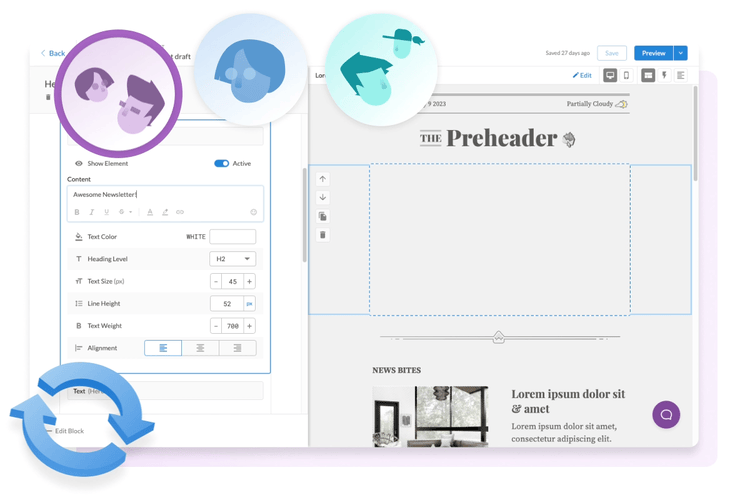
Data profiles
Personalization is pivotal for every marketing team; it’s the best way to build trust with your customers and drive ROI from each email you send. Dyspatch makes in-depth personalization a cinch, with Data Profiles. Build profiles for your customer personas, and watch Dyspatch do the rest.
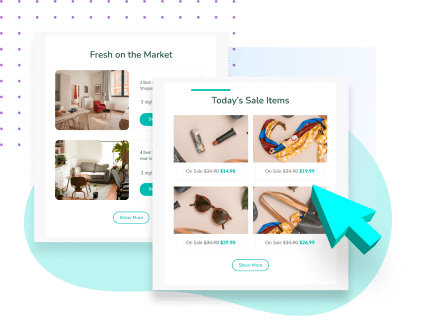
Create engaging interactive emails
Implementing interactive and dynamic content doesn’t have to be complicated. Simply drag-and-drop pre-coded content blocks into your email templates to increase engagement by up to 500%. Easily click and connect to your data sources.
Boost results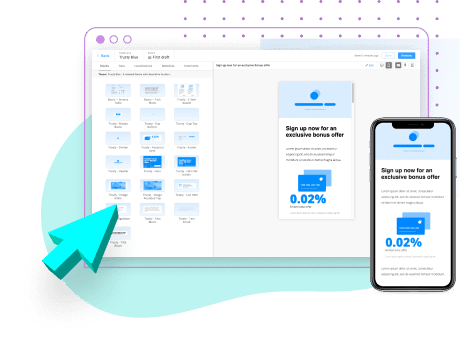
Responsive, unbreakable email code
Reclaim engineering resources spent on coding and troubleshooting emails. The Dyspatch Markup Language (DML) ensures templates are responsive and compatible with all email clients and devices. And DML supports 98% of email use cases.
Get a demo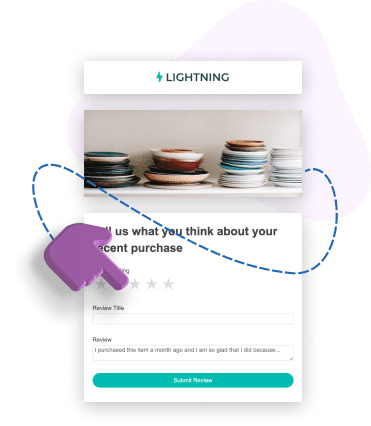
Time-saving reusable content blocks
Stop building HTML emails from scratch. With Dyspatch’s drag-and-drop email builder, create content blocks once and reuse them in multiple email templates. Spend less time creating and more time strategizing, innovating, and excelling in your field.
Get a demo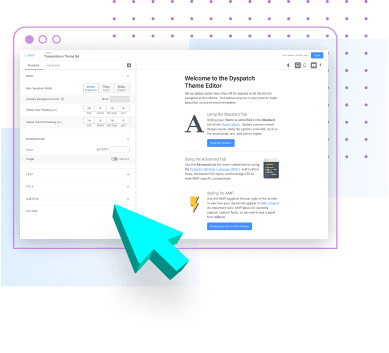
Build guardrails for brand consistency
Help your brand stand out as recognizable and reliable in the inbox. Set block permissions to make components, like logos, footers, and social links, non-editable and maintain brand consistency with ease — no matter the size of your email team or organization.
Get a demo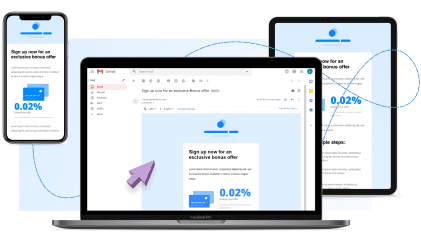
Testing and previews for quality assurance
Never lose revenue to a broken email again. Make sure your emails look amazing on every device, in every inbox with integrated Litmus testing. Preview your email templates across all email clients, devices, and even in dark mode, right in Dyspatch.
Get a demo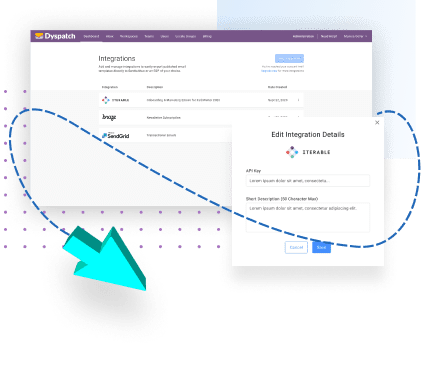
Flexible integrations with any ESP
Whether you use one or many ESPs, we have you covered. Manage marketing and transactional emails in Dyspatch and easily sync with any ESP for sending. Bonus: All our integrations support conditional data and localized content.
Get a demoHave more questions about the Dyspatch email builder?
We have you covered! Read on for answers to commonly asked questions about our drag-and-drop email builder.
Every email builder brings something different to the table. Dyspatch is a drag and drop email template builder — meaning users of all skill levels can use it, without having to write code. But Dyspatch isn’t just a no code solution. Our unique modular email design system is ideal for creative, fast-moving teams looking to innovate. Each module is fully customizable, reusable, and on-brand. Plus, the Dyspatch email builder includes a library of pre-coded interactive email apps. Powered by AMP for Email, our cutting edge Apps in Email can help teams serve dynamic, interactive experiences and 5x engagement.
Dyspatch is one of the world’s leading HTML email builders. Leveraging a custom markup language we built in-house, Dyspatch Markup Language (DML), our email builder tool will automatically convert your template into HTML or the templating language used by your ESP. DML is a condensed version of HTML that’s much quicker and easier to use. It’s also the ‘secret sauce’ that makes Dyspatch email templates responsive and unbreakable by default — so you never have to worry about the cost of a broken email again.
Dyspatch is not just an email builder, it’s as a centralized hub for email creation and management. Workspaces, themes, blocks, and an image library make it easy to organize assets for all your campaigns. Annotated comments and built-in approval workflows promote a collaborative, productive workflow. Plus, advanced features, like localization, interactive modules, and guardrails, will help you experiment with advanced techniques and send quality emails with confidence.
We offer monthly or annual pricing plans for teams of all sizes. So whether you’re a one or 100 person email team, you’ll find a plan that’s right for you. (You can also save 10% off the Dyspatch email builder when you choose an annual option.)
Trusted and loved
BY COMPANIES AROUND THE WORLD

"Dyspatch has massively reduced the hours our team spends on creating emails, which has allowed us to really scale our content production. We're producing over 20 emails a week, and the platform ensures every single one is on-brand, localized, and responsive, without any engineering effort. It's also allowed us to implement interactivity with AMP comment reply emails. The Dyspatch team was so supportive and collaborative on that project, and it's been a huge success with our users."
Megan Walsh,
Global Head of Lifecycle Marketing at Canva

“Dyspatch is the perfect solution to manage the email building and template creation process. Combined with Braze, it creates a holistic workflow for localizations and scaling our email channel.”
Karan Gupta,
Head of Retention at Grover

“The thing that’s most impressed me about Dyspatch is that the team’s been able to keep it a really simple product to use. It just fits perfectly, solving an extremely important problem that lots and lots of companies have – managing email content.”
Dave Greenstein,
Chief Architect and Head of Growth at Urbandoor







